Abstract
The paper focuses on the use of AI to summarize and hypothesize mind-sets, motives, and strategies for peace, all involving the current conflict between Israel and Hamas in Gaza. The embedded AI in the BimiLeap program (Idea Coach), originally developed to facilitate critical thinking, has been expanded to allow users to understand social situations and the motives of people more profoundly. The Mind Genomics platform thus moves from its origin as an attitude research platform into an easy-to-use, rapid, affordable component of the world of Open Innovation, accessible to all, and producing useful, testable suggestions. The paper shows easy-to-create inquiries provided to AI, and the type of output immediately available, and then more output summaries returned a few minutes later.
Introduction
The sociology, psychology, and other areas of social science are filled with studies of conflict, of conflict resolution, and so forth. Conflict appears to be inborn. The purpose of this paper is to move from a profound study of the nature of conflicts to the use of easily deployed artificial intelligence to deal with conflicts. Conflict, disagreements, take many forms, each form the focus of a scientific literature going back decades, and for political conflict, going back centuries and millennia. The continuing question is how to resolve a conflict and can there be new ways of discovering resolutions.
The approach presented in this paper, AI-Enhanced Mind Genomics, emerged from decades of research on understanding how people make decisions. The objective of Mind Genomics is to study the decisions that people make in their ordinary lives, not so much by asking them what is important but instead by showing people different ‘vignettes’, combinations of messages about people, and asking people to select how they feel when they read these vignettes. Table 1 shows an example of a vignette and the rating question.
The important thing about the vignettes is that they represent slices of life. Although the vignette is simply a phrase, like those in Table 1 below, when these phrases are put into a combination, either by a person who is thinking or by a machine following a prescribed set of combinations, they paint a picture of situation that has some semblance of reality. People who read the vignette get a feeling of the situation and make a judgment about the situation.
Before proceeding with the AI enhancements, it is important to contrast the approach presented here with the conventional approaches. Conventional wisdom works with simple ideas, general concepts. These ideas often cover a wide range of topics. The ideas themselves are rarely ‘fleshed out’ with specific, depending rather on the mind of the respondent to fill in the specifics. In this way the researcher is able to identify the general point of view of the respondent, e.g., the respondent is interested in economic opportunities, or the respondent is interested in safety and security, etc. One need only take one of the seemingly omnipresent surveys on a business transaction or a medical visit to see the focus from the top down, from the general topics such as efficiency, politeness and competency. This is no focus on specifics, on the granularity of the experience.
Table 1: The vignette and the rating question
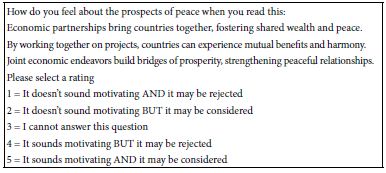
The Original Mind Genomics Approach
Mind Genomics emerged about thirty years ago, when author Moskowitz and colleague Derek Martin presented the approach at the annual congress of ESOMAR (World Society of Market Research), held in Copenhagen [1]. The approach, then called IdeaMap, featured the notion of evaluation of systematically varied vignettes, and then the deconstruction of the rating into the part-worth contribution made by each element. The approach was an advancement of earlier efforts called ‘conjoint measurement’, based on foundational work by Luce and Tukey [2], and continued by Wharton School professors Paul Green, Jerry Wind, and Abba Krieger [3,4]. Their focus was the complexity of decision making by assuming that people were presented with options, and that they had to trade-off one option for another. They could not have everything. The experiments run by Green and Wind were done to identify the rules of the mind, viz., what was important to a person. Their sets of experiments were augment by modeling and segmentation
In the end, these early contributions set the stage for the emergence of IdeaMap, morphing into RDE (Rule Developing Experimentation [5], and finally the emerging science of Mind Genomics [6] The Mind Genomics science facilitated by a computer platform, www.bimileap.com. The platform guided the user, first to define the study, then to develop four questions which told a story about the topic (Figure 1, Panel A). After some years of experience it became clear that the stumbling block was the development of meaningful questions. The education system taught people how to give answers, but not how to think critically, and clearly not how to formulate a series of questions which would tell a relevant story.
The introduction of AI in the form of ChatGPT) solved the problem [7]. The Mind Genomics platform was augmented with an AI capability called Idea Coach (Figure 1 Panel B). The user simply typed in a request for questions about a topic, and Idea Coach returned with 15 suggestions, as shown in Table 2. The user then selected four questions or developed questions without the AI, or even took the questions suggested by AI, and edited the questions. The output became the four questions. The same approach is used to provide answers to the questions selected. The user could select questions and edit them, obtain 15 answers to each question, and finally select four answers. This was done four times, once for each question. This second step, obtaining answers to a selected question using Idea Coach, appears in Table 3. The entire process from start to finish typically requires about 20 minutes once the user has understood the steps.
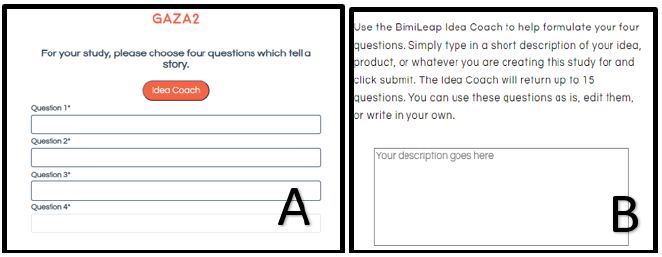
Figure 1: Panel A shows the request for four questions. Panel B shows the input to Idea Coach, which permits the user to invoke AI to help create the questions.
Table 2: The 15 questions generated by AI embedded in Idea Coach
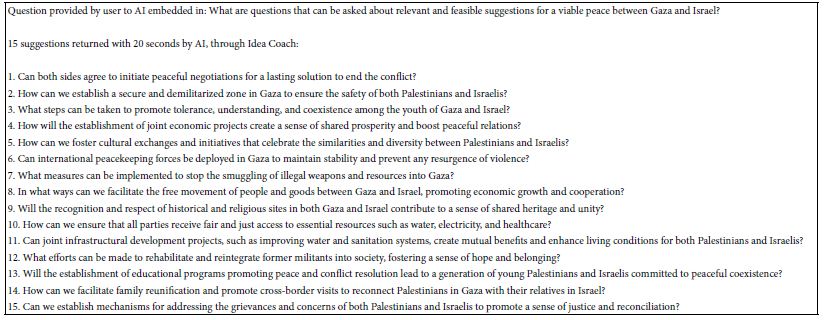
Table 3: The 15 answers to one of the selected questions generated by AI embedded in Idea Coach

Using Mind Genomics and Idea Coach to Spur Open Innovation in Public Policy
The term open innovation has been presented as a new way to drive innovation [8-10]. The notion is that one can innovate in many ways, and need not follow the typical, perhaps exaggerated pattern of innovation following the ‘inspiration’ given to the highest-ranking member in the group or in the company. The number of articles on open innovation (Number?) is testament to the fact the concept is alive and well. The application of open innovation to public policy is also testament to the acceptance of the concept in a world where competition, profit and lost, and very survival take a different shape.
The focus of this paper is to present how a new way of thinking with Idea Coach and Mind Genomics can contribute to open innovation in public policy. The effort presented here shows just one exercise in what became a short set of exercises in public policy to formulate what to do in the current war between Israel and Hamas being fought in Gaza. The presentation shows directly what can be obtained in a matter of less than a few minutes and suggests how to iterate the inputs to suggest new ideas.
The remainder of this paper is the presentation of the results of the exercise. There is little need for comment. The results and the interpretation are self-evident. What is important to remember, however, are the immediacy, simplicity, affordability, and depth of the results. And, of course, the reality that these ideas must be quickly evaluated, whether using Mind Genomics with real people to identify the acceptable of the ideas, or some other method, such as in-depth interviews, focus groups, or even surveys.
Mind Genomics as Ideas Underlying Open Innovation in Policy: The Steps, the Results
Following the process shown in Figure 1, Panel B, the user defines the situation (Table 4). The squib is far more complicated, however, because now the user is going to engage the AI built into Idea Coach to provide much more information. The instructions are to provide questions, reasons underlying the questions, answers to those questions from Israel, answers to those questions from the UN, as well as making the answers come from an honest person, and making the questions and answers interesting.
Within a minute or so, the AI in Idea Coach returns with the request. The immediate results are shown in Table 5. The user can edit the request shown in Table 4 and re-run, or simply re-run for another attempt at providing the information. Each iteration can be done in 30 seconds or shorter. Within 10 minutes the motivated user can do 20 iteration, simply by pressing the repeat button. Some of the results will be the same in several iterations, but many of the iterations will surface new material. The process allows for instant iterations by giving the user the opportunity to modify the ‘squib’ or prompt to Idea Coach in real time, and then re-submit.
After about 20 minutes, and after the user has logged out correctly, the platform sends the user the entire booklet of iterations, doing so by email. In addition to one tab devoted to the iteration that the user saw, the platform further summarizes the results, and applies additional AI to the material it generated. Table 6 shows the summarized material.
Table 4: First set of inputs which frame the question

Table 5: Immediate output from Idea Coach to address the input squib (prompt) shown in Table 4
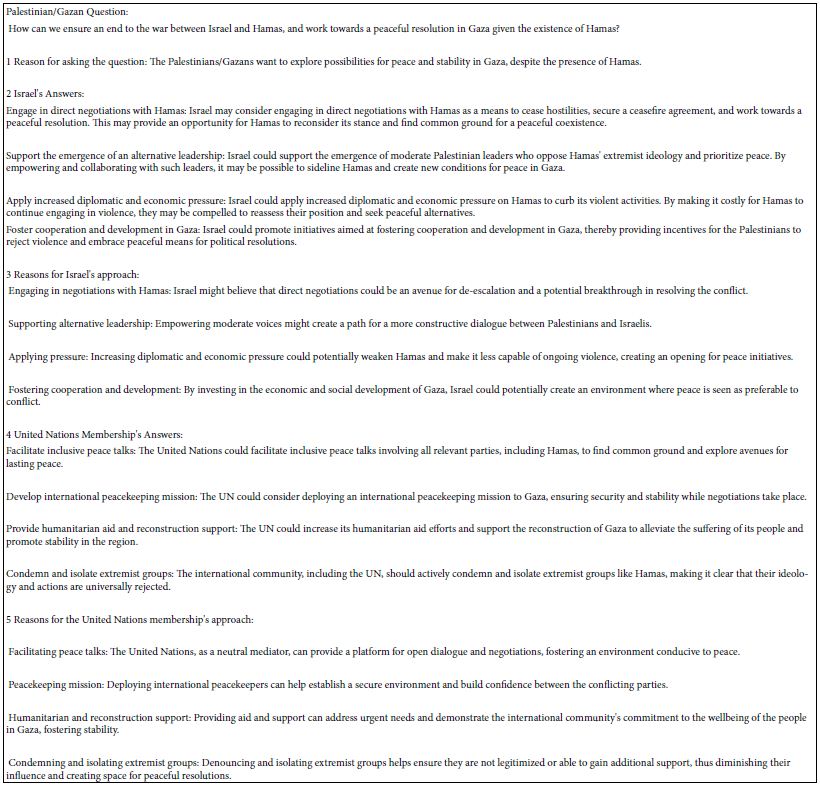
Table 6: Summarization and AI-based expansion of initial AI output shown in Table 5
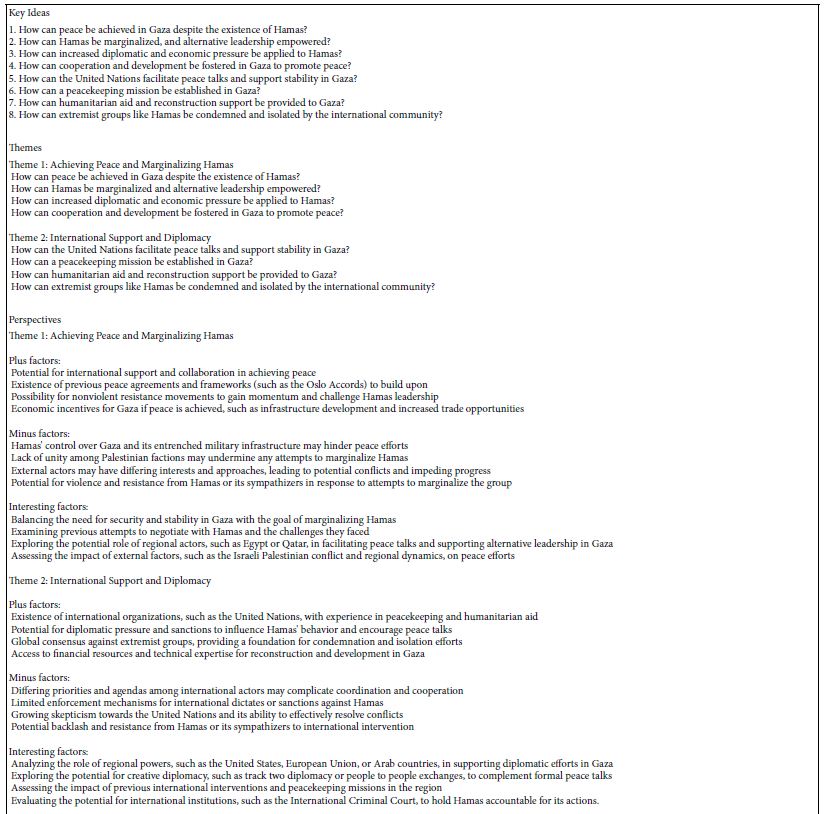

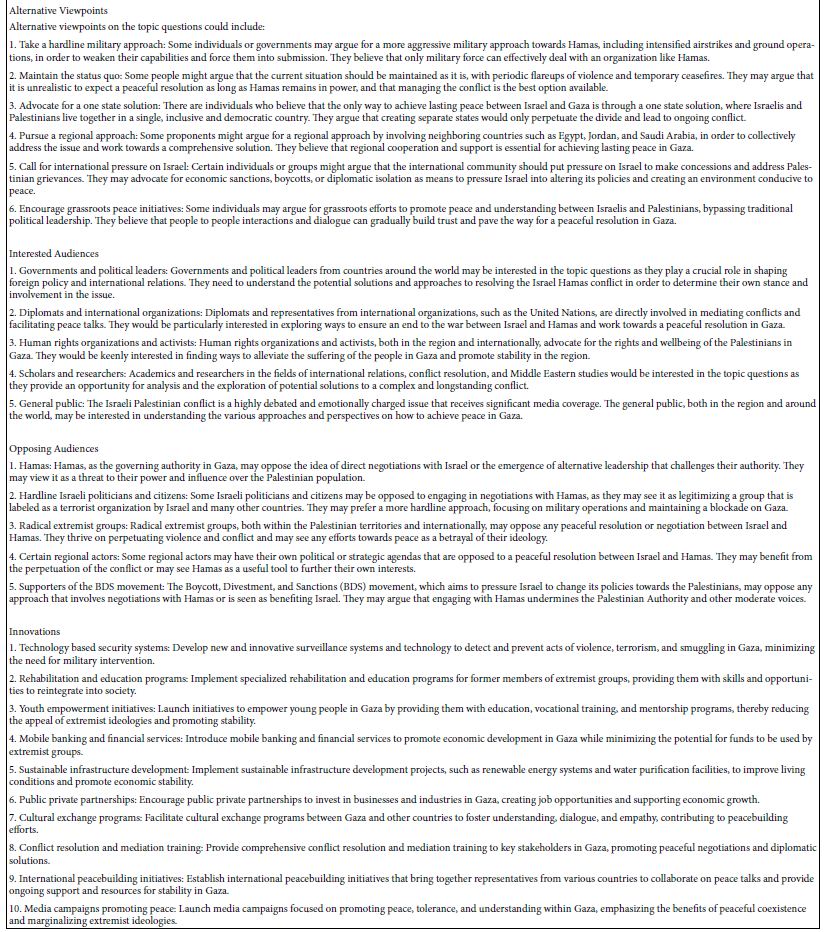
Moving the Process Entirely to AI to Explore Synthetized Mind-sets
The final demonstration in this paper emerges from the work in Mind Genomics which demonstrated the existence of ‘mind-sets’, operationally defined as people who responded the same way to specific messages in a granular topic (REF). These mind-sets may more profoundly differentiate people than do the simple patterns of response in questionnaires, primarily because the latter, the questionnaires, focus on the generalities. The different segments emerging from these questionnaires are more global. It is often very difficult to know what to say to a segment in these global segments when the requirement is to deal with a specific, localized issue. In contrast, mind-sets in Mind Genomics emerge from the granular. Mind-sets in Mind Genomics become general, global, only when they seem to emerge again and again in different topics as now-familiar ways in which the people differ.
What happens when the AI is told that there are three mind-sets, but is not told what the mind-sets are, or anything about them. Rather, the AI is asked to define the mind-sets, and then answer questions about these mind-sets. Table 7 shows one of these ‘exercises’, showing the input to Idea Coach at the top (section A), then the materials returned immediately in the middle (section B), and finally the AI summarization returned with the Idea Book at the boom (section C).
Table 7: Using A to synthesize and then understand possible mind-sets

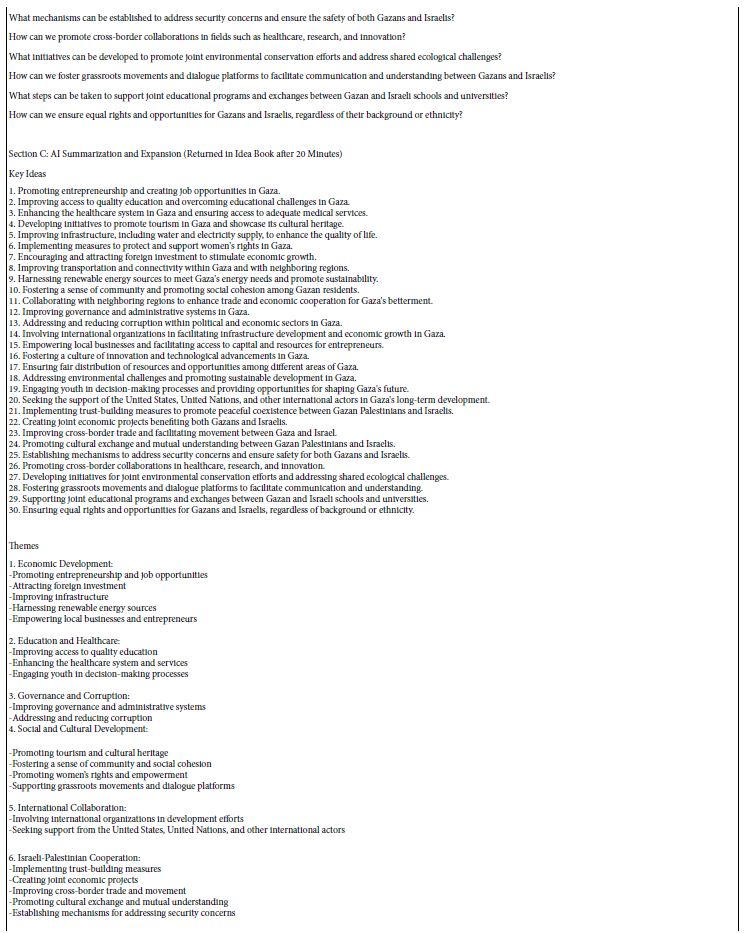
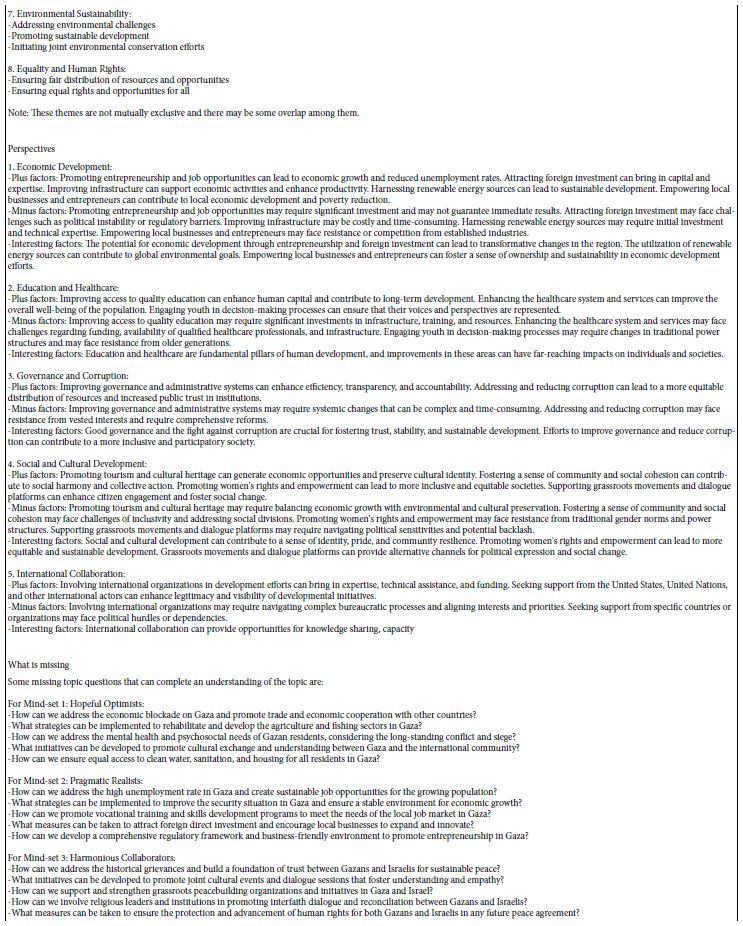
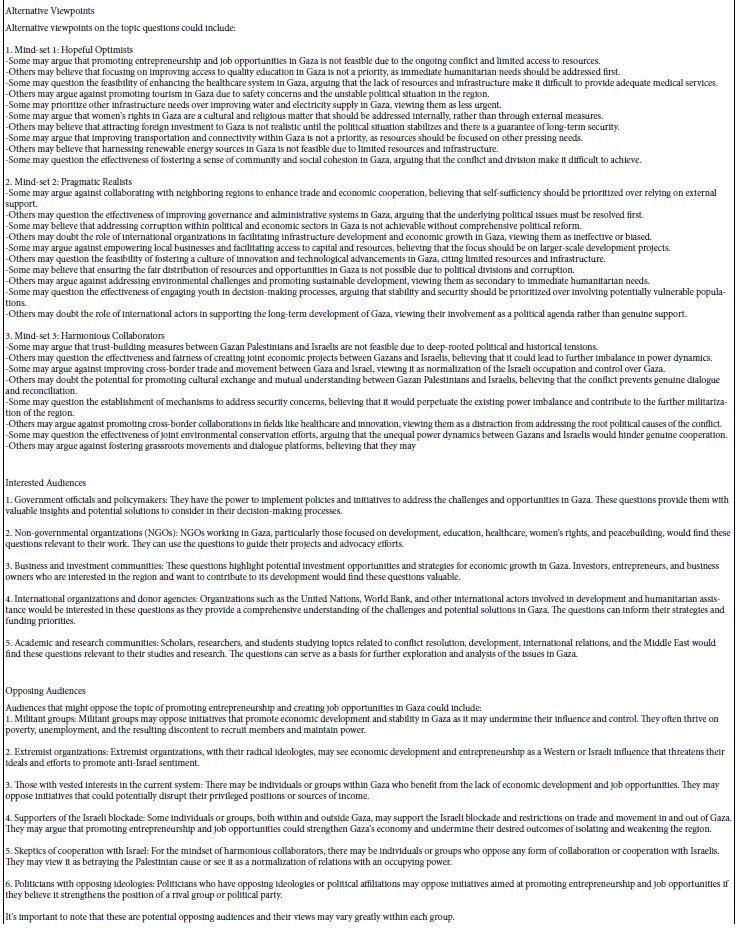
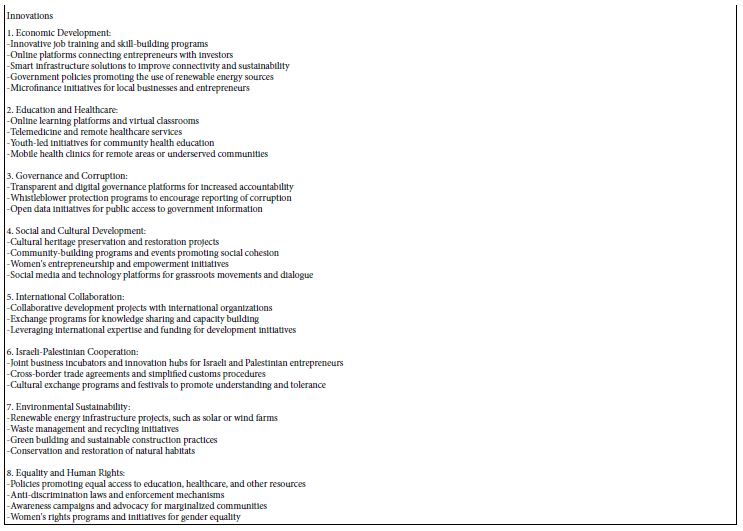
Discussion and Conclusions
There is no dearth of ideas in the world of public policy. As Mark Twain is presumed to have quipped about the weather, ‘while everybody talked about the weather, nobody seemed to do anything about it. The same may be said about the world order, although the proliferation of government organizations as well as NGO’s suggest that there ought to be a way to do things about conflicts, rather than watch the conflict continue to fester, with the loss of lives, property, and the destruction of hope.
The approach presented here was founded on an emerging science, Mind Genomics. Mind Genomics does not seek to fill holes in the literature, nor answer calls from the literature to create a nice, tidy, coherent whole piece of knowledge. Rather, having descended both from the abstract mathematical psychology of Luce, the elegance of the nascent field of consumer psychology by Wharton Marketing Professors Green and Wind, and finally battle tested in the commercial world, Mind Genomics presents a way to deal with these problems of public policy. Moving one step beyond, however, Mind Genomics incorporates AI in its Idea Coach, first to create questions and answers for those challenged to think critically about a topic, and in this second instantiation to do a lot of the thinking and suggest strategies.
What then will the literature look like in a generation when the science of Mind Genomics blends with the informational and idea generating capabilities of AI. Will there be a science of public policy? What will happen to issues with conflicts of all types, the ‘stuff of life’ which reduces its quality. It is possible that the conflicts of the world will each be addressed in a Mind Genomics ‘Idea Book’, such as the Gaza conflict addressed here, each of the Idea Books for the specific conflict requesting the same sets of choreographed suggestions, ranging from negotiations to suggestions for motives, the understanding of basic mind-sets, and finally activities to reduce the conflict and work towards a long-lasting peace. The immediate availability (minutes and hours) of Idea Books created for each situation, each conflict, makes it possible to make that conjecture, that dream, into a reality.
References
- Moskowitz HR, Martin D (1993) How computer aided design and presentation of concepts speeds up the product development process. In ESOMAR Marketing Research Congress, 405.
- Luce RD, Tukey JW (1964) Simultaneous conjoint measurement: A new type of fundamental measurement. Journal of Mathematical Psychology 1: 1-27.
- Green PE, Srinivasan V (1978) Conjoint analysis in consumer research: issues and outlook. Journal of Consumer Research 5: 103-123.
- Green PE, Krieger AM, Wind Y (2001) Thirty years of conjoint analysis: Reflections and prospects. Interfaces 31: 56-S73.
- Moskowitz HR, Gofman A (2007) Selling Blue Elephants: How to Make Great Products that People Want Before They Even Know They Want Them. Pearson Education.
- Moskowitz HR (2012) ‘Mind genomics’: The experimental, inductive science of the ordinary, and its application to aspects of food and feeding. Physiology & behavior 107: 606-613.[crossref]
- Kim T, Han S (2023) An exploratory study on social issues related to ChatGPT: focusing on news big data-based topic modeling analysis. Journal of the Digital Content Society 24: 1209-1220.
- Bogers M, Chesbrough H, Moedas C (2018) Open innovation: Research, practices, and policies. California Management Review 60: 5-16.
- De Jong JP, Kalvet T, Vanhaverbeke W (2010) Exploring a theoretical framework to structure the public policy implications of open innovation. Technology Analysis & Strategic Management 22: 877-896.
- Lee S.M, Hwang T, Choi D (2012) Open innovation in the public sector of leading countries. Management Decision 50: 147-162.